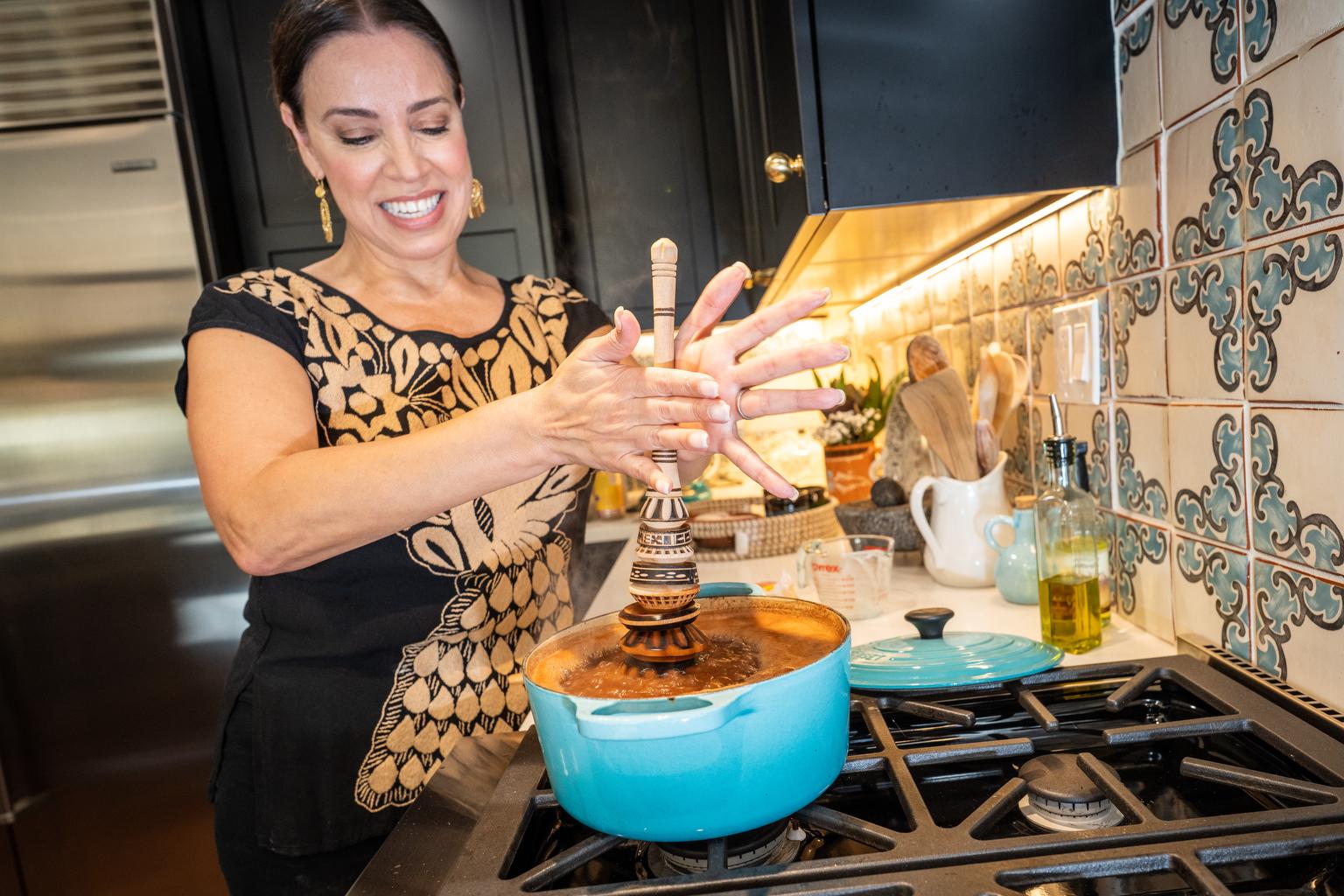
Food and culture blogger Yvette Marquez-Sharpnack, who lives in Highlands Ranch, has written three published cookbooks — but she didn’t always love cooking.
However, she did always love to host gatherings of friends and family, which led to the focus of her newest book, “Muy Bueno: Fiestas.”
Chapter by chapter, Marquez-Sharpnack, who writes the Muy Bueno blog, shares recipes and traditions for American and Mexican holidays, including Día de los Muertos, which starts Nov. 1.
Growing up, she said celebrating the holiday, which translates to Day of the Dead, involved going to the cemetery with her grandparents in El Paso, Texas.
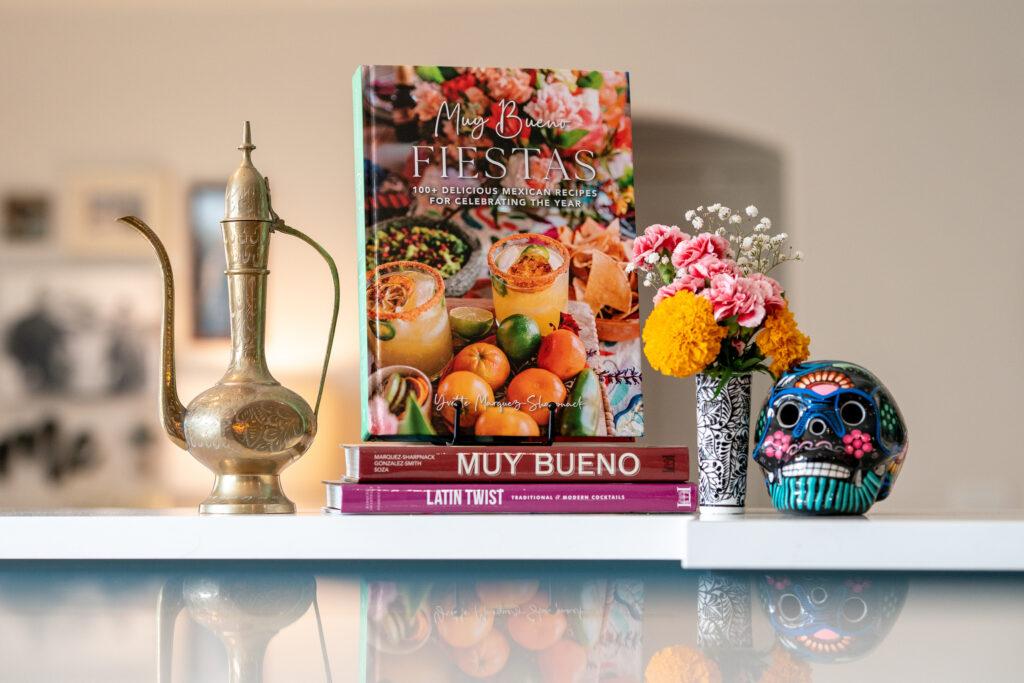
“You set out candles, you set out food, you set out tequila, you play mariachi music, and you stay at the cemetery and you just honor the departed. You pray, you sing, you tell stories, you invite them to come and celebrate,” she said.
Now, in her family and beyond, the holiday has become more mainstream, as reflected in and inspired by the Disney movie “Coco,” which came out in 2017.
“There are parades, people get in costume and dress like La Catrina, which is this beautiful Mexican sugar skull come to life,” she said. “It’s become a big celebration.”
Of course, Marquez-Sharpnack’s traditions for Día de los Muertos include food, like Mexican hot chocolate, which she starts by simmering large cinnamon sticks on the stove for an hour, filling up her house with the scents of her childhood. She also decorates an ofrenda, or altar, at home with photos of her father, her grandma, her great-aunts and other family members.
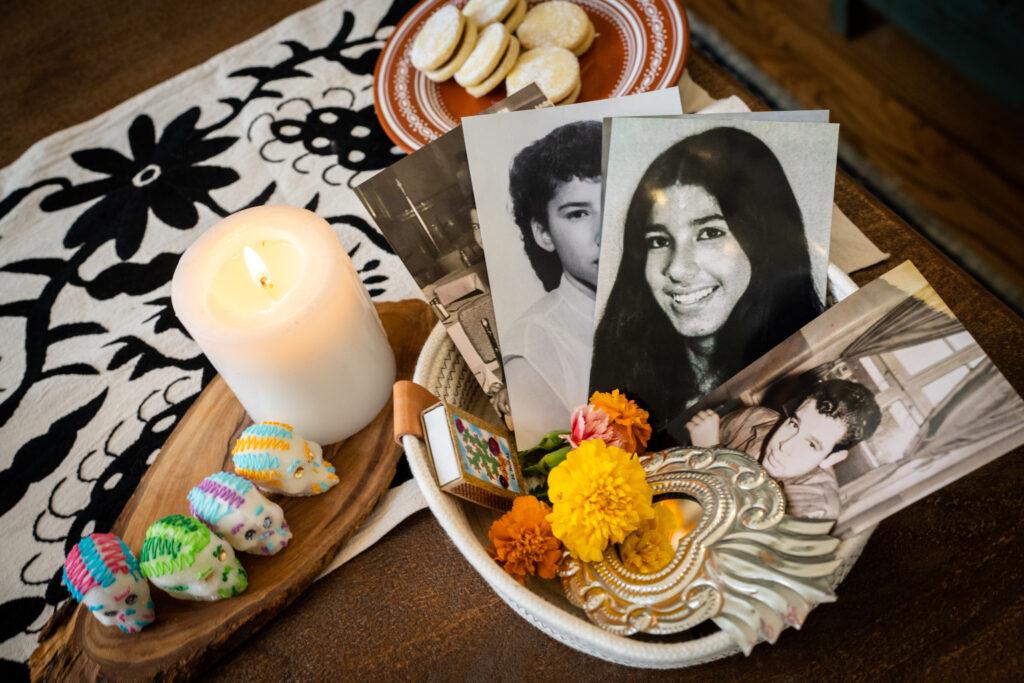
It all reflects her impeccable eye for style: she worked as a designer before becoming a food entrepreneur, which is clear on her Instagram page @muybuenocooking.
Marquez-Sharpnack spoke with Colorado Matters host Chandra Thomas Whitfield about Día de los Muertos, how she learned homestyle Mexican cooking and her secrets to good salsa.
Read the interview
This interview has been edited for length and clarity.
Chandra Thomas Whitfield: Could you tell me more about your ofrenda?
Yvette Marquez-Sharpnack: It basically honors your departed loved ones. It’s a time to set up their photographs, set out their belongings, maybe some candles. Marigolds are very traditional for Dia de los Muertos because they have a very strong aroma. It’s supposed to lure their spirit to come and visit for a day. So there’s a lot of significance and symbolism for the elements on an altar.
What do you remember about celebrating Día de los Muertos growing up?
My grandma would take me to the cemetery and we’d leave flowers for her two children who passed away when they were little. It was more of All Souls Day, or All Saints Day, or Día de los Angelitos, which is a celebration to honor children.
And as it’s evolved, it’s even become bigger in Mexico. It’s evolved not just in my family, but throughout the world. It’s definitely grown in popularity.
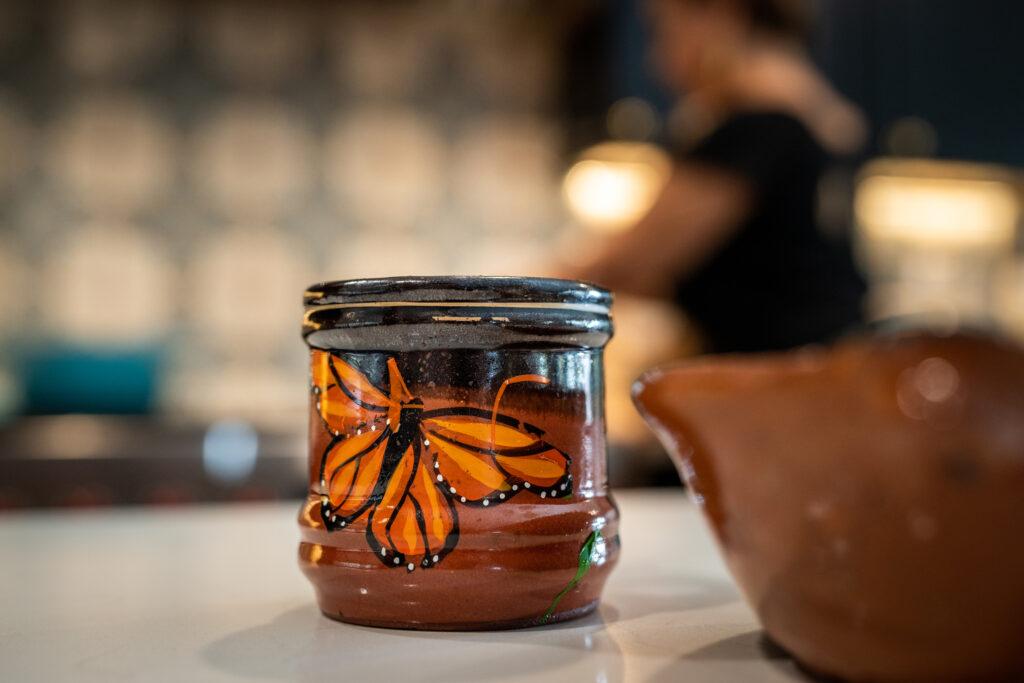
Some people have the misconception that it’s a sad holiday, or they may conflate it with Halloween. But it’s celebratory!
Yes, and that’s what we try to show with all the colors. The saying I always think of is, “Your departed are only forgotten if you forget them.” I was thinking the other day about our own legacies. Maybe our children and our children’s children will talk about us, and if we’re lucky, a third generation will, too. But after that, who knows what’s going to be left behind. My goal is to continue the stories so that even if my children didn’t know my grandma like I did, they’ll still know all those stories and continue sharing them generation after generation.
Is there a traditional Day of the Dead meal?
There are all kinds of traditional dishes, like mole or tamales. Honestly, it’s all about who you’re honoring and what they loved to eat. When I was growing up, my mom would make us Mexican hot chocolate in the cooler months. Both of my grandmas would always just brew canela, so their houses always smelled like cinnamon. And you can just drink cinnamon tea! There are so many medicinal properties, and it’s very aromatic.
Yvette Marquez-Sharpnack's Mexican hot chocolate recipe
| Ingredients - 3 large cinnamon sticks - 2 large discs of Mexican chocolate - 1/4 cup of cornstarch - 1/4 cup of water - Milk for thickening (optional) |
| Instructions - Brew the cinnamon sticks on the stove for an hour. - Remove the cinnamon and add the Mexican chocolate discs and a slurry mixture of the cornstarch and water. Add milk if you'd like it thicker. - Use a whisk or molinillo to froth before serving. |
Did you learn to cook at home in Texas, or during your travels to Mexico?
Definitely at home, in El Paso. The recipes that are near and dear to my heart come from the memories that I have with my grandma in her kitchen. I grew up with my grandma next door to me, and she was always cooking. She was always roasting chiles, simmering canela, which is cinnamon, to make avena, which is a Mexican oatmeal. These scents bring me so much joy, and those scents have evolved and grown into me with my culinary journey.
But traveling has brought me a whole different awareness of some foods that I didn't even know existed until I left El Paso. There's always something to learn; it's such a vast cuisine. For example, we had nopales, which are cactus paddles, growing up, but the way they make food with them in, say, Oaxaca, is just amazing. You can have a smoked cactus salad, and it’s just amazing. I come home with those inspirations and I try to recreate them here. Traveling inspires me to come up with new flavors.
Why did you want to write a cookbook about parties and celebrations?
The question that people always ask me is, “What’s your favorite recipe?” That’s always so hard to think about, because my taste and cravings depend on the season. Right now, in the fall, I crave fall flavors like pumpkin, so pumpkin empanadas are huge in our family. Also Mexican pan dulce, or sweet breads. So I wanted to categorize the book with those flavors and seasonally through the holidays. That’s how I entertain, and that’s how I’m inspired to cook. I have a garden, and whatever’s in season is what I’m cooking.
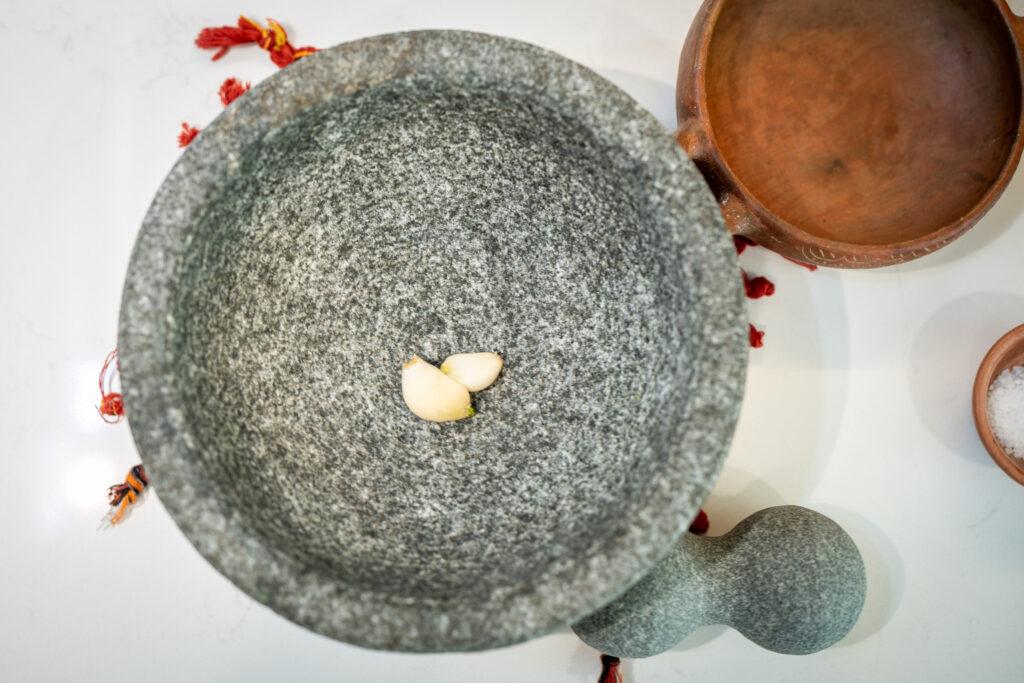
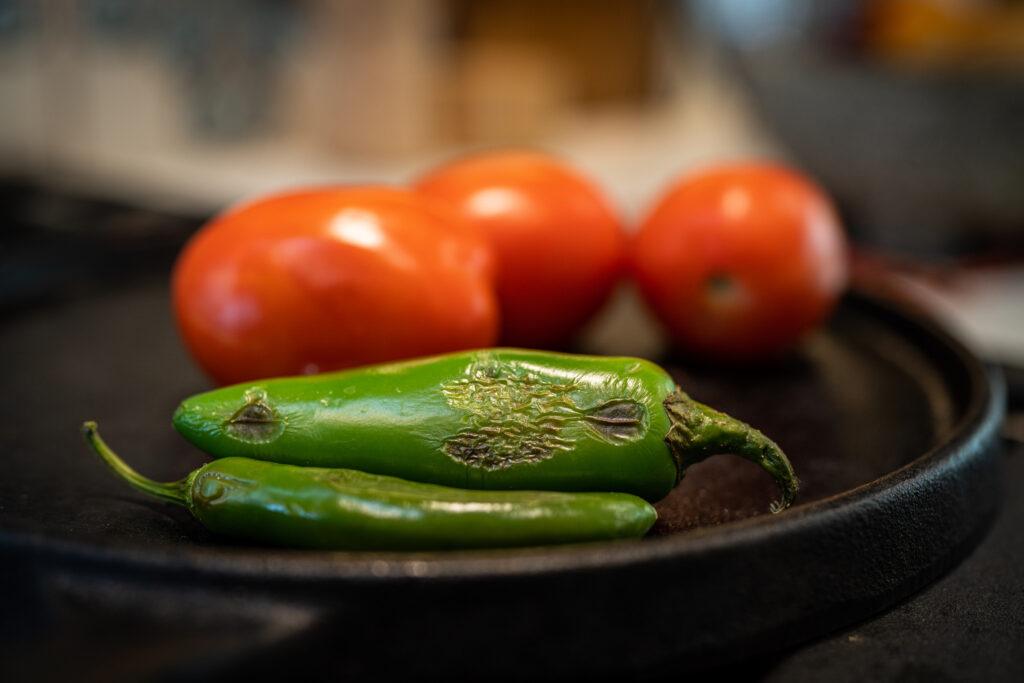
What’s the secret to making good salsa?
I make it with a molcajete, which is a mortar and pestle made of lava rock. It gives salsa a very traditional, delicious flavor. I put whole tomatoes and peppers onto a cast iron skillet, and roast them.
While that roasts, I grind up a couple of garlic cloves with a little bit of salt in the molcajete, and make a paste. You do the same process if you’re making guacamole. It just tastes so much better made in a molcajete.
The smell of roasting chiles on the stove is one of those scents that was part of my childhood. My grandma was always roasting chiles, every day she was making fresh salsa. After she roasted all the ingredients, she would take them in her hand and crush them up. As a little girl, I would always be there thinking, “Isn’t that going to burn her hands, and her eyes?”
But after the tomatoes and chiles roast, I add them to the molcajete, too.
I love warm salsa. I hate when you go to a restaurant and you get cold salsa. You don’t want to put cold salsa on your nice hot plate of food.
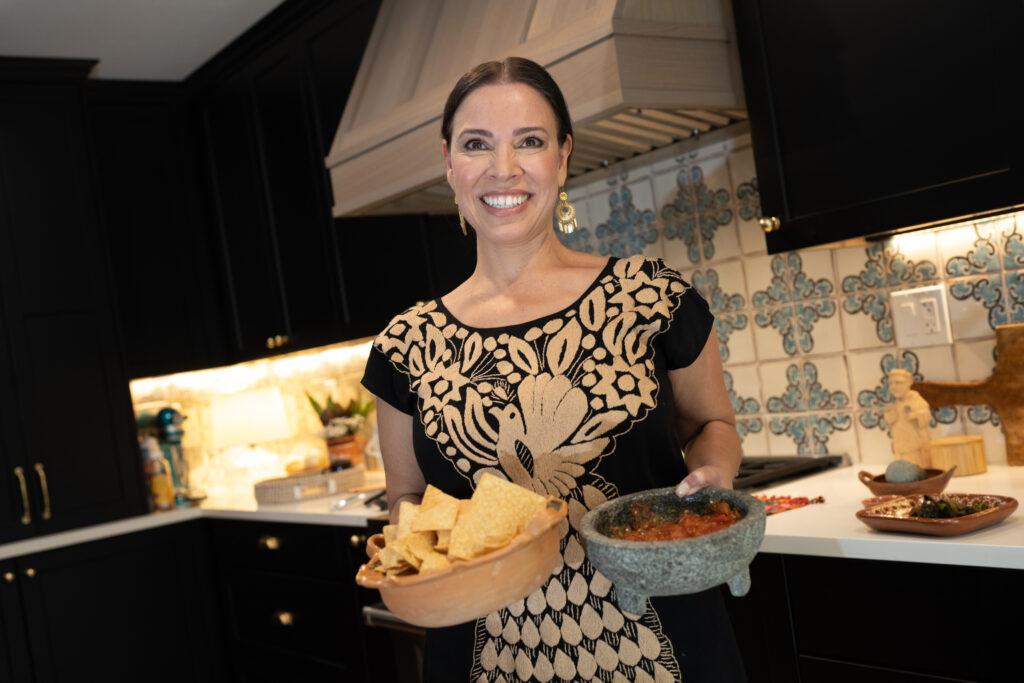
We’ve talked a lot about death. Have you thought about what you want to leave behind when you’re gone? Was that part of your motivation to write this cookbook and write down all these recipes and traditions?
Yes, after my grandma passed away in 2004, my daughter was a little under two years old. That was my aha moment: she wasn’t going to know my grandma, and it was time for me to step up those traditions.
It was my daughter, when she was 8 years old, who suggested that I write a cookbook. It was because my mom was visiting a lot and showing me how to make these recipes, but we never wrote them down. Anytime I would cook something, I would call my mom and ask, like, “How much cornstarch do I add? Or how many discs of Mexican chocolate do I add?” When my daughter said I should really write a cookbook, I thought, “Genius, yes, let's do it.”
I thought I would just write a simple little family cookbook. I never knew it was going to evolve into three published cookbooks and my full-time business. So one little idea just turned into something bigger.









